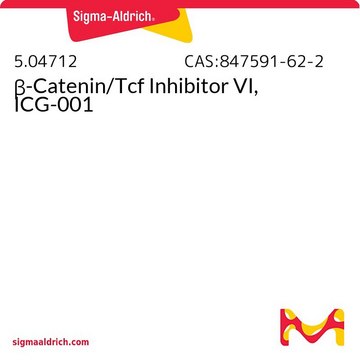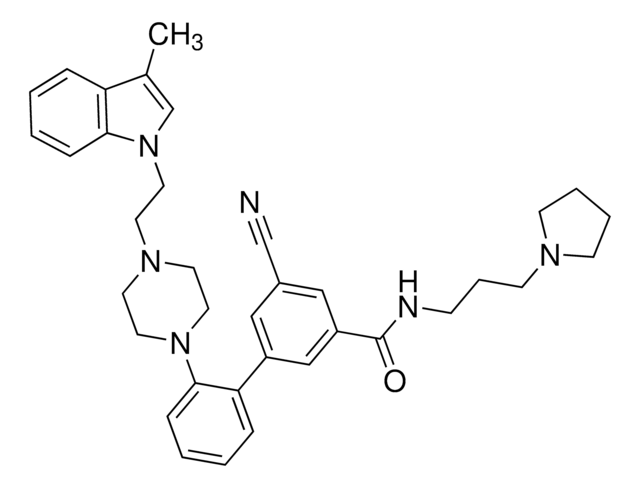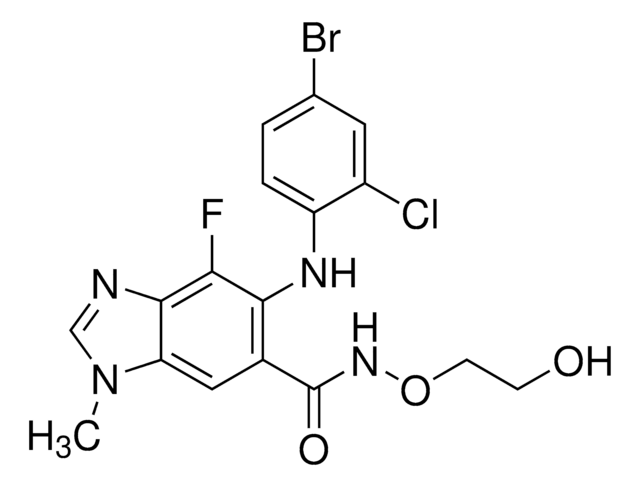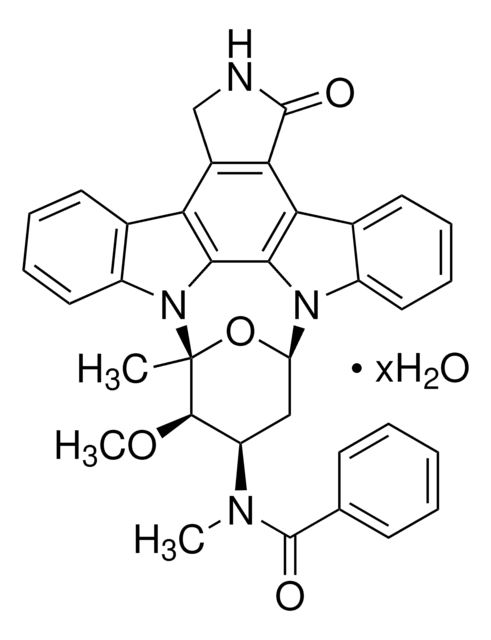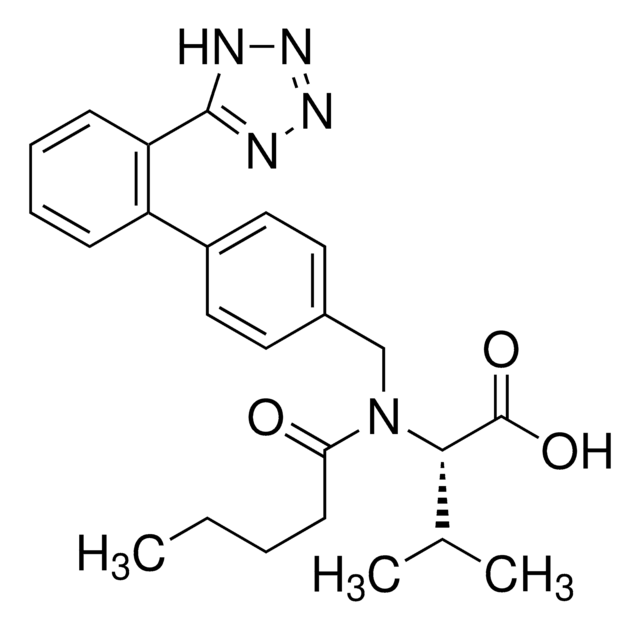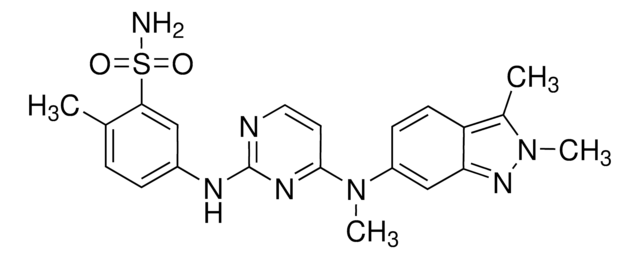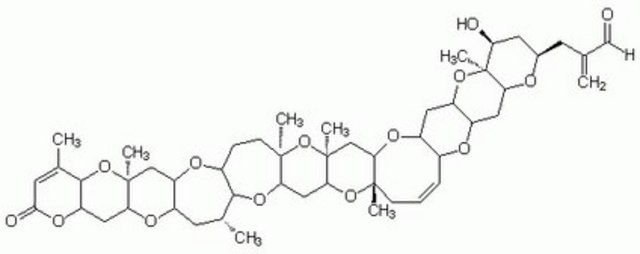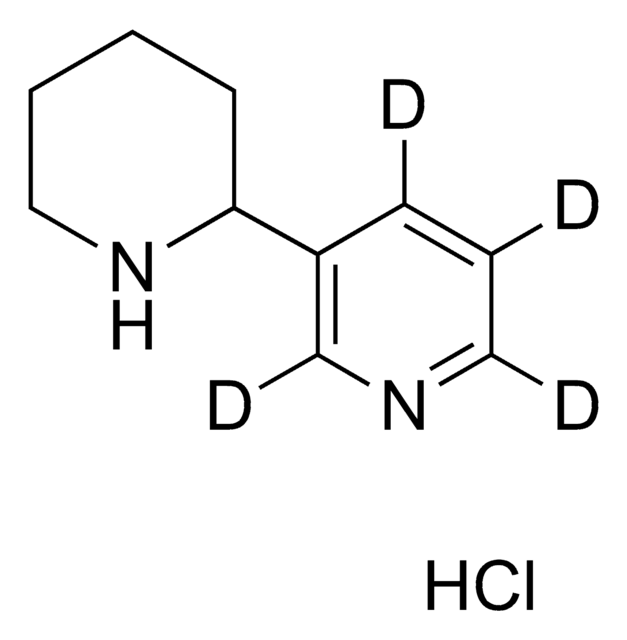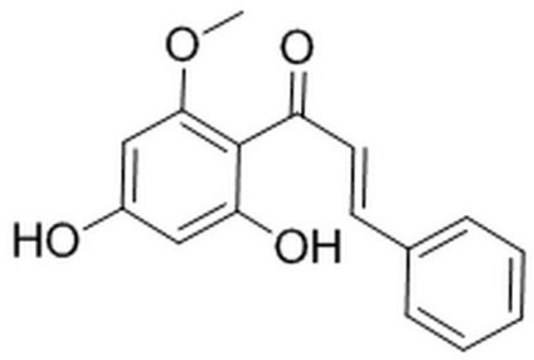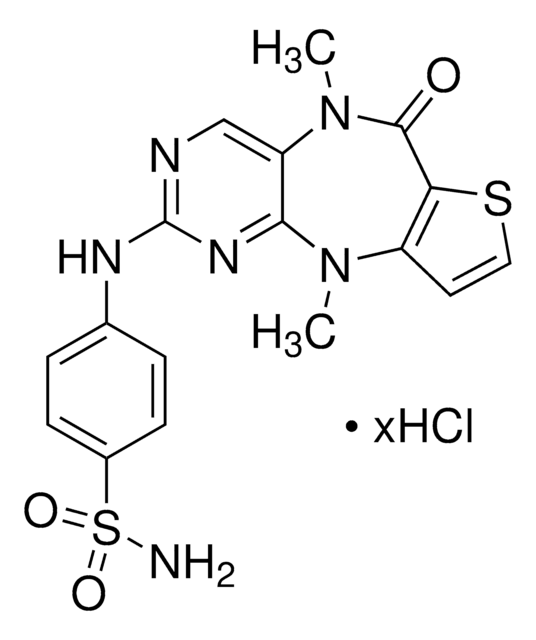Recommended Products
Assay
≥95% (HPLC)
form
aqueous solution
mol wt
2728.2 kDa
packaging
pkg of 5 mL
shipped in
dry ice
storage temp.
−70°C
General description
BET (bromodomains and extra-terminal) domain is a highly conserved motif composed of 110 amino acids. It is composed of four anti-parallel α-helices, and contains a bromodomain in the amino-terminal region and an extraterminal (ET) protein-protein interaction domain in the carboxy-terminal region. The two conserved loops are linked with a hydrophobic cleft. This domain is present in BRD (bromodomain-containing) proteins, such as BRD2, BRD3 and BRD4, and these proteins are thus known as BET family proteins. Humans are thought to contain 56 bromodomains present in 42 proteins.
Biochem/physiol Actions
BRD (bromodomain) proteins are known as chromatin “readers”, as they recruit chromatin-regulating enzymes which are responsible for histone modification. These proteins eventually act on promoters and control gene expression.
Storage Class Code
12 - Non Combustible Liquids
Flash Point(F)
Not applicable
Flash Point(C)
Not applicable
Regulatory Information
新产品
Choose from one of the most recent versions:
Certificates of Analysis (COA)
Lot/Batch Number
Don't see the Right Version?
If you require a particular version, you can look up a specific certificate by the Lot or Batch number.
Already Own This Product?
Find documentation for the products that you have recently purchased in the Document Library.
BET domain co-regulators in obesity, inflammation and cancer.
Belkina AC and Denis GV
Nature Reviews. Cancer, 12(7), 465-477 (2012)
C A Johnson et al.
Nucleic acids research, 26(4), 994-1001 (1998-03-21)
The pattern of histone H4 acetylation in different genomic regions has been investigated by immunoprecipitating oligonucleosomes from a human lymphoblastoid cell line with antibodies to H4 acetylated at lysines 5, 8, 12 or 16. DNA from antibody-bound or unbound chromatin
Z Jasencakova et al.
The Plant cell, 12(11), 2087-2100 (2000-11-23)
Reversible acetylation of nucleosomal histones H3 and H4 generally is believed to be correlated with potential transcriptional activity of eukaryotic chromatin domains. Here, we report that the extent of H4 acetylation within euchromatin and heterochromatic domains is linked with DNA
Our team of scientists has experience in all areas of research including Life Science, Material Science, Chemical Synthesis, Chromatography, Analytical and many others.
Contact Technical Service